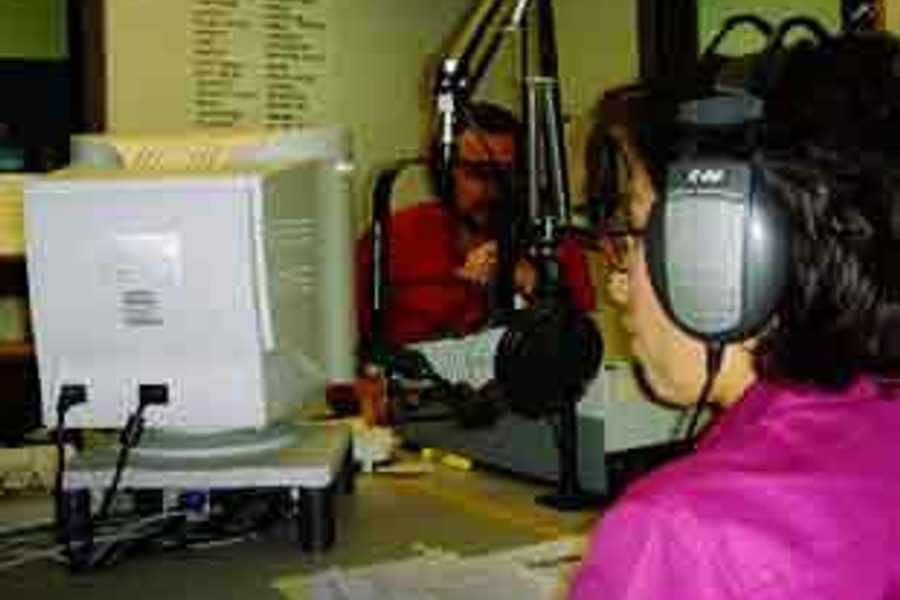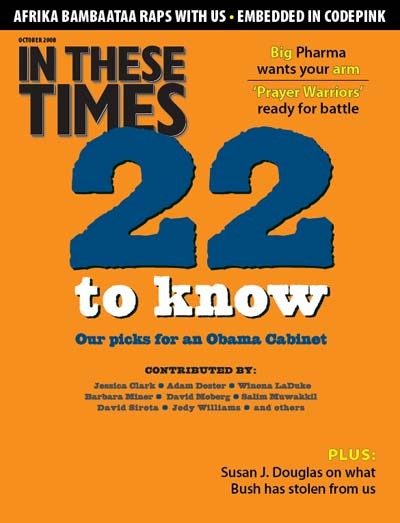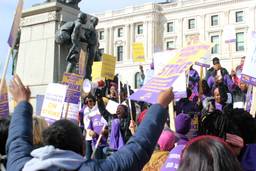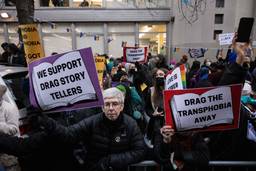Native Radio Building Community
For many communities -- especially the country’s Native American tribes -- radio still promises a way to spread news, share stories and support a cultural or regional identity.
Mike Janssen

As new technologies take hold in the marketplace – and in the minds of consumers – old media are starting to look, well, older. FM radio is no exception. The debut of new cell phones that deliver audio applications spurred predictions of radio’s demise.
But for many communities, radio still promises a way to spread news, share stories and support a cultural or regional identity. This is especially true for the country’s Native American tribes, which have seized a rare chance to start new radio stations as a way of strengthening their communities.
Last fall, many Native people joined hundreds of schools, activists, churches and nonprofit groups that applied for new noncommercial FM stations with the Federal Communications Commission (FCC). Most of these applications were for frequencies in smaller towns and rural areas. (Radio spectrum in larger cities is too crowded to accommodate new signals).
Because the FCC had not accepted applications for noncommercial stations in more than seven years, demand was high.
Working to help tribal applicants was Native Public Media (NPM), a spin-off of the National Federation of Community Broadcasters, which advocates on behalf of community stations across the country. NPM focuses on all media, not just radio. One of its goals is to increase Native access to broadband Internet.
But even in the Internet era, radio still suits the needs of Native communities, says Loris Ann Taylor, NPM’s executive director. Cheap and ubiquitous, radio is easily accessible to the poor, the illiterate and the low-tech. Radio also covers great distances instantaneously, making it particularly valuable for tribal communities in far-flung villages.
In Alaska, Native communities use radio to exchange personal messages and keep abreast of potentially dangerous weather.
“Radio really reaches across those barriers,” Taylor says. “In Indian country, radio still works.”
For Taylor, empowering Native communities with their own stations also carries a deeper significance. Through locally controlled media, tribal communities gain the power to reflect their Native cultures back to each other – a right denied them throughout decades of persecution and genocide. Taylor still remembers the grade-school teacher who pinched her hand if she spoke her Hopi language in class.
“What I find really important about my work is that radio allows us to be who we want to be,” she says. “It’s like freedom.”
Many noncommercial stations around the country focus on community issues. This is especially true of Native stations, which cover topics such as health, education and the environment; feature locally programmed music; and broadcast in Native languages that in some places are spoken by very few people.
With help from Native Public Media, 37 Native nations applied for 51 radio stations last fall. None of the applicants currently operates a station, according to Taylor. Even if some of those applicants fail in their bid for licenses, Native radio could double its U.S. presence. (There are 33 Native stations on the air now.)
It could also branch out geographically. No tribal stations broadcast east of the Mississippi, but last fall’s applicants included the Seneca tribe of New York and the Houma of Louisiana.
So far, 12 tribes have received FCC clearance to build stations. Many are now looking for startup funds, pricing equipment costs and planning programming.
One is South Dakota’s Sisseton-Wahpeton Oyate tribe, which once operated a radio station but lost the license when it failed to meet annual FCC requirements. Its drive to regain a station began at the urging of a few tribal members who run an Internet station, says Garryl Rousseau, chair of the new FM station’s board.
Many of the tribe’s 6,000 members want the station to promote their Dakota language, Rousseau says, which is in need of a boost. In a 2003 survey, less than 10 percent of members rated their command of Dakota as either “fluent” or “good,” and half said they couldn’t speak a word.
“It hasn’t gotten any better,” says Rousseau. He envisions a radio station that could partner with tribal schools to develop language education programs.
Other tribes face a longer wait to see whether they will receive broadcast licenses, as the FCC sorts out conflicts involving multiple applicants vying for competing frequencies. Among these applicants are the Coeur d’Alene tribe of northern Idaho, where Valerie Fast Horse, the director of information technology, learned of the opportunity to start a station through Taylor. (Both serve on the telecommunications committee of the National Congress of American Indians, an organization of tribal governments made up of 250 member tribes).
The Coeur d’Alene reservation covers 345,000 acres and is home to 2,000 tribal members who have no radio station that provides programming about their region or culture, Fast Horse says. They get their news from a station in Spokane, Wash.
Fast Horse says she envisions a radio station that covers local sports, tribal government and the Coeur d’Alene’s culture, music, language and history. The station could also deliver news about forest fires and heavy snowstorms.
And perhaps, most importantly, it could help improve the tribe’s relationship with non-Native neighbors. The Coeur d’Alene recently encountered friction with a group of nearby residents over control of resources, says Fast Horse.
“We need to tell our own stories about ourselves in a way that’s suitable to us,” she says. “Others can say what they want – it could be favorable or unfavorable. If we can tell our story, people have another voice to listen to.”






